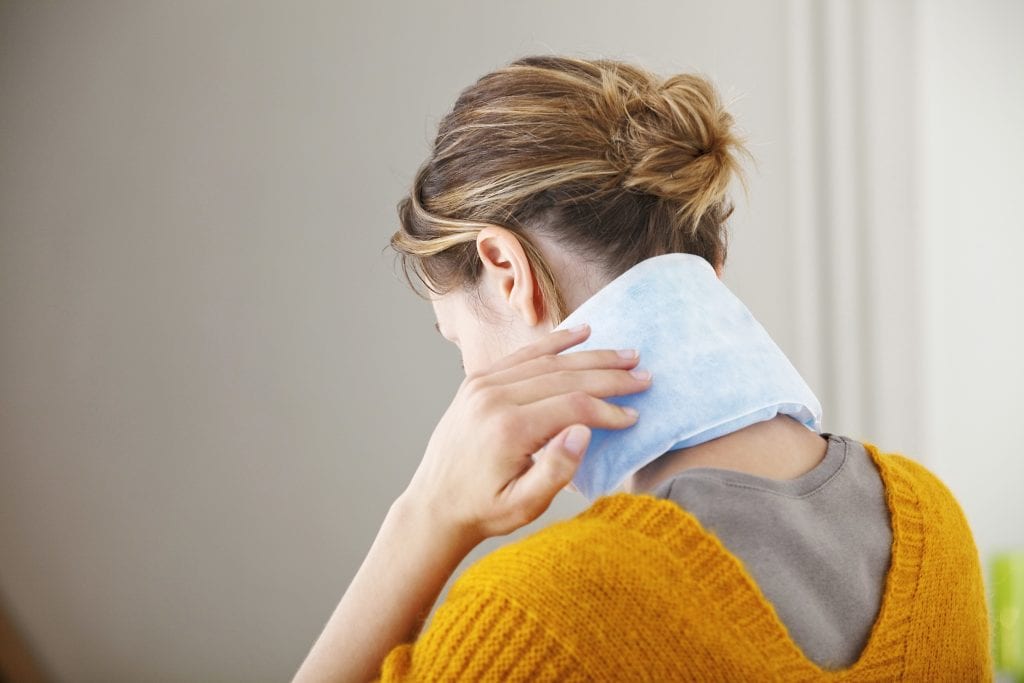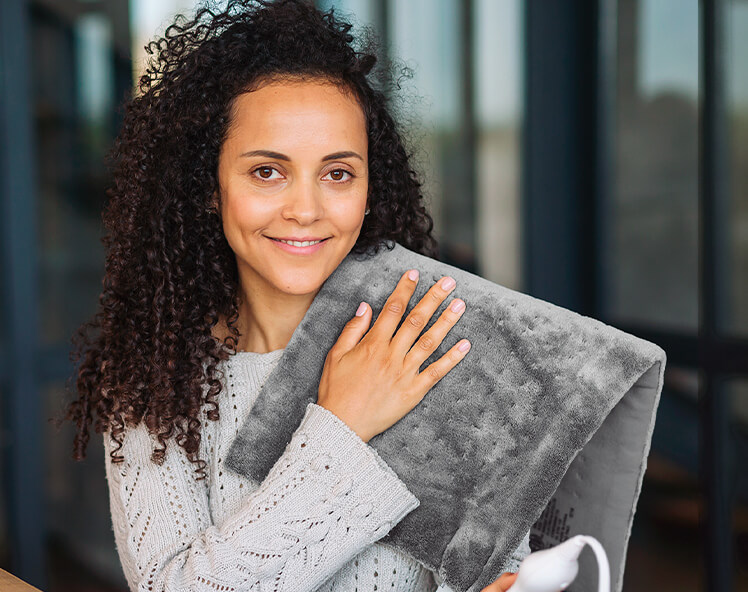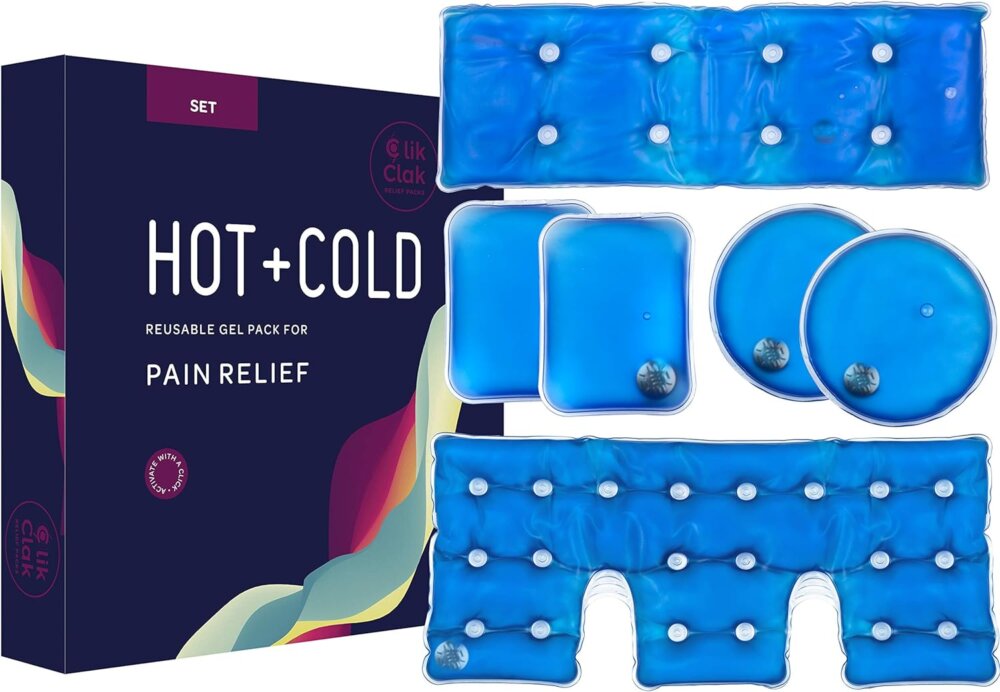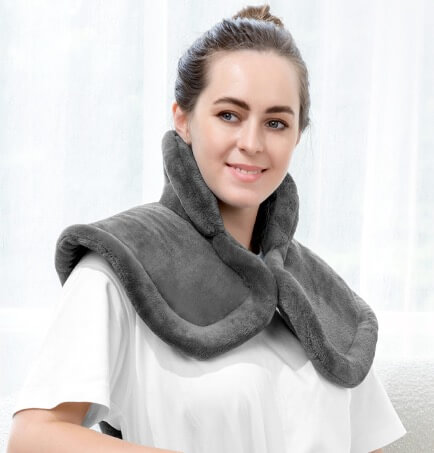The products and services mentioned below were selected independent of sales and advertising. However, Don't Waste Your Money may receive a small commission from the purchase of any products or services through an affiliate link to the retailer's website.
If you’ve ever had a sore back, dealt with pain from menstruation or had muscle stiffness, there’s a good chance you’ve used a heating pad. These handy gadgets can soothe and relax, and yes, there’s science to back it up.
Leann Poston, M.D, a physician with over 30 years of medical experience, says they are essential for warming the muscles and the surrounding connective tissues.
“Heating pads increase blood flow to the affected area, leading to increased oxygen and nutrient delivery and waste removal,” she says. “Heat can also relax muscles and relieve cramping. Infrared heating pads can penetrate heat more deeply into muscles than traditional electric heating pads.”
But is there a right way to use a heating pad? Can they be even more effective? What about the wrong ways to use one? We spoke to a physician to find out!
How to Use a Heating Pad

Heating pads may be a trusted solution for your body’s aches and pains, but they’re only effective if they’re used properly.
To get the most out of your heat therapy, Poston provides a few tips on how to safely utilize a pad without harming your body.
“Apply a heating pad while you are awake,” she says. “Place a cloth between the heating pad and the skin to protect it from burns. Start at the lowest heat setting and gradually increase the intensity. Limit use to 15 to 20 minutes at a time.”
Many people use heat therapy to treat chronic back pain. If it’s a recent injury — within 24 to 48 hours — then use cold therapy first for best results. The cold will restrict blood vessels, reduce swelling, decrease inflammation and cause some numbing. After the inflammation has been reduced, apply heat to improve tissue and muscle flexibility and overall back functioning.
How Not To Use A Heating Pad

Pads can be damaging if used incorrectly. Using one as you fall asleep might dull the pain and ease the tension, but it can be hazardous to your skin. Opt for a heating pad with an automatic shut-off option. In addition, you should never use one with a cracked electrical cord.
Poston advises, “Don’t use a heating pad while sleeping. Do not use it on damaged skin or in areas where you have nerve damage and may be unable to tell if skin becomes damaged.”
Heating pads provide comfort, but they are not safe for everyone.
“Don’t use them on small children or anyone who cannot verbalize discomfort if the pad becomes too warm,” suggests Poston. “Pregnant people should talk with their doctor before using one.”
Also, some people may have preexisting conditions that may make burning or complications more likely. These include diabetes, multiple sclerosis, dermatitis, cardiovascular disease, hypertension and other conditions. If you’re not sure, consult your doctor before buying a heating pad.
Choosing A Heating Pad for Your Lifestyle and Needs

Several types of heating pads exist: electric, infrared, chemical and gel or liquid versions. Which type works best for you may depend on what body part you want to use it on, what safety features you want, and whether you’re at home or somewhere else.
- Electric heating pads are convenient because they can consistently maintain the same temperature throughout use, either through a battery power pack or by plugging into an outlet. Several electric pads on the market come with a variety of settings and include an automatic shut-off timer that prevents injury.
- Infrared heating pads are also electric; however, they convert this electricity to infrared heat, which can offer a modern solution to pain because the heat penetrates deeply into muscles.
- Chemical heating pads work by causing a chemical reaction in their ingredients that provides heat for a short period of time. To activate, you either expose the material to air or squeeze the pad. These are often available in packs and may stick right to your skin or clothing. They’re often single-use items but work great for traveling.
- Gel heating pads are convenient if you have access to a microwave, as they’ll need to be heated for a minute or two. Don’t place gel pads directly on your skin! Follow the manufacturer’s directions for safety; these may need to be wrapped in a towel or used on top of clothing.
- Of course, there’s also the good old-fashioned hot water bottle option too.
MORE: How to make a homemade heating pad
The Best Heating Pads
Now that we’ve done a deep dive into the best — and not so great — ways to use a heating pad, here are a few options that are sure to alleviate your pain points while providing comfort.
Geniani Electric Heating Pad

This ultra-soft pad is a soft yet powerful option designed to help alleviate stomach cramps, sore muscles and other pain areas. Alternate between low, medium and high temperature settings with an automatic turn-off option.
UTK Infrared Heating Pad

The UTK infrared pad offers full-body treatment for sore muscles in your back, shoulder, abdomen, legs, and arms. The infrared rays can penetrate problem areas up to 3 inches, guaranteeing fast-acting relief.
Clik Clak Reusable Hot and Cold Heating Pad

Clik Clak’s reusable gel pack provides soothing heat almost instantly. This dual-purpose pack can act as a heating pad or an ice pack, depending on your preference. Each box is equipped with six pieces that can be used on the shoulders, back, neck and hands.
Renpho Electric Heating Pad

Designed to offer full coverage for the neck, shoulders and back, this heating pad is weighted with smart heating and timer settings. It’s made of soft flannel to evenly distribute heat and includes straps to keep it in place. The control has a digital display for ease of use.
Emily O’Brien contributed to this report.
This story originally appeared on Don't Waste Your Money.


